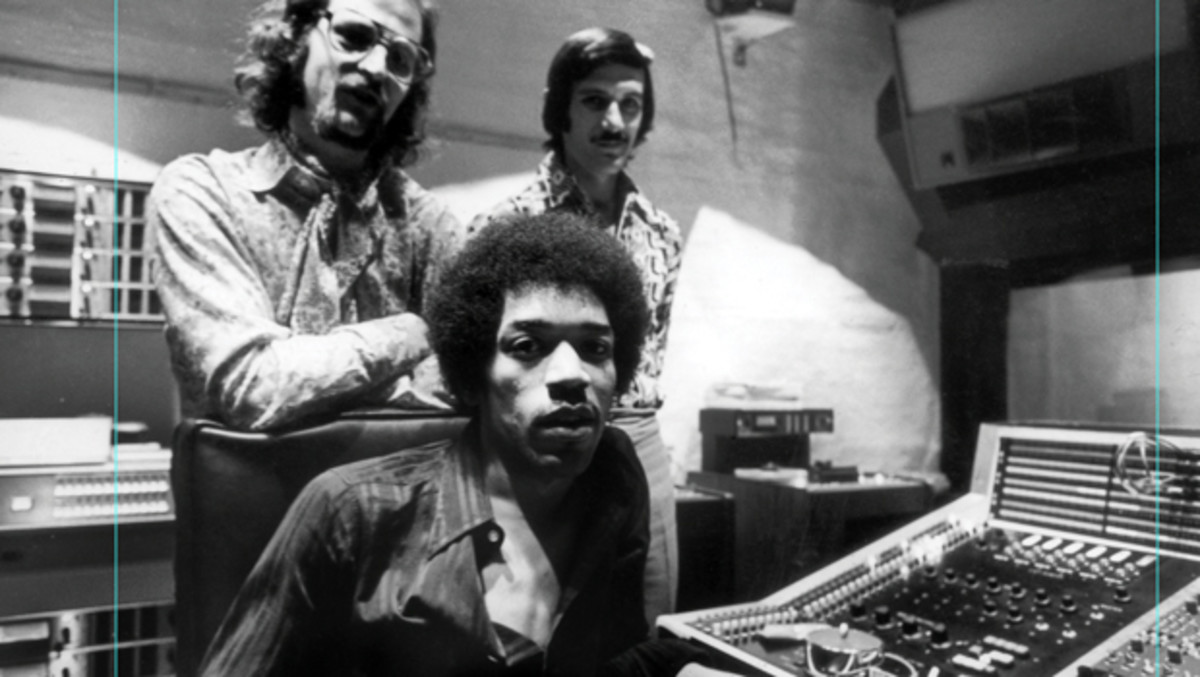Seems every few years, there’s a new Jimi Hendrix archival release. Sometimes it’s a live gig, sometimes it’s a collection of odds-and-ends. Once in a while, it’s a box set. Usually, they’re yet another curious addition to a catalogue that was tragically cut short.
And with Both Sides of the Sky, we have yet another.

Here, we have yet another mix of material recorded between 1968 and 1970. Most of this has never been officially released, but has been bootlegged in one form or another. It ranges the gamut from blues to hard rock, softly psychedelic rock to laid back jamming. It’s not really a mess, but it does muddy the picture somewhat: what exactly was Hendrix planning as a followup to Electric Ladyland? Where was his head as the calendar flipped to 1970? And how would he have progressed if he’d lived a few years longer?
Both Sides of the Sky opens with a swaggering version of Muddy Waters’ “Mannish Boy.” While Muddy himself would turn this into a hard-edged tune in a few years, here Hendrix’s guitar chugs and swirls. It’s propulsive, with Buddy Miles pounding away on drums and Billy Cox keeping things on track. But it’s also pretty loose, even by Hendrix’s standards, feeling exactly like what it is: a warmup track from their first session together.
Later that year, this lineup recorded “Lover Man,” and the take here is red-hot:

Miles pounds and crashes, while Hendrix rips off overdriven blues licks like it’s second nature. By the time he rips into a solo, Cox and Miles have worked up a hell of a pocket. It’s a genuinely exciting performance.
Elsewhere, Both Sides of the Sky goes back to the original Experience lineup. “Hear My Train A-Coming,” has a sizzling lead from Hendrix, his guitar sounding like it’s about to blow out his amplifier. The band takes things at a slow pace, letting Hendrix wring the emotion from his playing, at once off the cuff and powerful. It builds into a slow-burning solo where he rips up and down his fretboard, at times sounding like he’s losing focus, but at others not far removed from the first Plastic Ono Band record.
And “Stepping Stone,” the last single he’d release in his lifetime, is presented here with a revved up version where Hendrix just rips off lines while the band prowls along at light speed.
Not everything here burns with excitement.
Some of the tracks here are loose jams: “Sweet Angel” is an instrumental run through while “Cherokee Mist” has him experimenting with an electric sitar with mixed results. And “Things I Used to Do” is an uninspired reading of an old blues standard, sounding like the band trying to find common ground with Johnny Winter.
Still, there are nice moments here. Perhaps the most interesting comes from Stephen Stills. Over the years, little odds and ends from their session together have been released (a tasty little jam was on the Carry On box set), but two lengthy workouts are here: “$20 Fine,” a Stills-written number that builds into a frenzied guitar workout and an interesting cover of Joni Mitchell’s “Woodstock,” recorded before Crosby, Stills, Nash and Young did their own electric version. Did this jam trigger an idea for Stills? While it lacks Young’s ragged guitar and the warm vocal harmonies, this one’s built around a droning organ and a propulsive rhythm. It’s not amazing, but more than just filler. It’s a wonder it remained unreleased for this long.
Overall, I’m getting the idea that there’s not much left in the Hendrix vaults.
I’m not surprised, really. Or well, I am, but only that they’re starting to run out now. For someone who exploded onto the scene in 1966 and died about four years later, he created a ton of music. Not all of it was good, or worthy of release, but his legacy is such that some want to hear everything. Even the scraps.
As a whole, Both Sides of the Sky is not a warmed up collection of scraps, but it’s not a fabled lost album, either. It suggests angles he might have pursued: slow blues workouts with talented guest sidesmen, high-octane rock, the mix of rock and soul he made with his Band of Gypsies lineup. But it doesn’t prove anything definite, and as such it’s interesting to Hendrix aficionados and rock scholars. And ultimately, for the average fan, there isn’t much here to really dig into.
Experience Hendrix is marketing this as part of a trilogy alongside People Hell and Angels and Valleys of Neptune. None of these three are a proper follow up to his last studio record, but maybe somewhere among the odds and ends, there’s a 30 minutes or so that is. I wish someone would get a move on it already.


